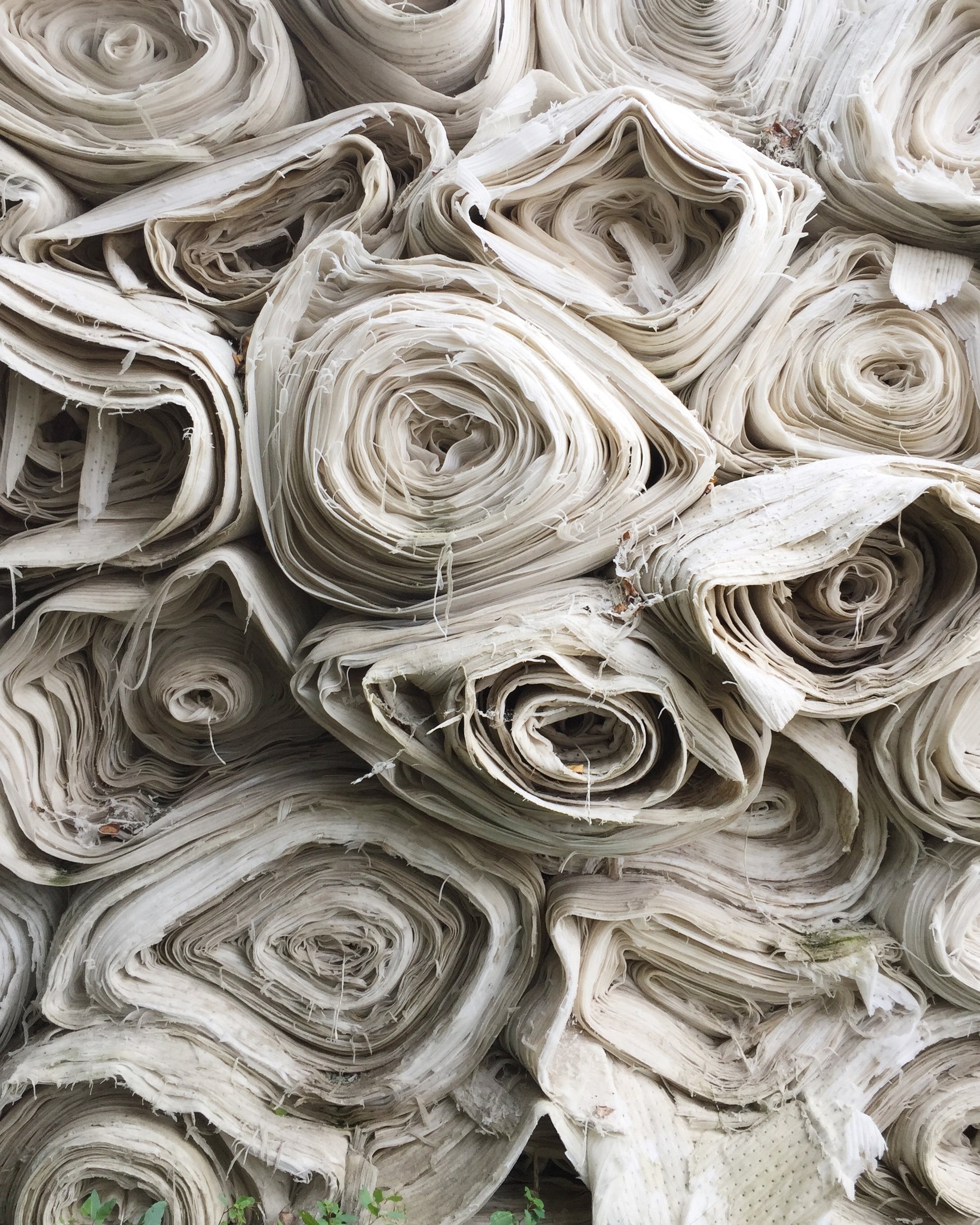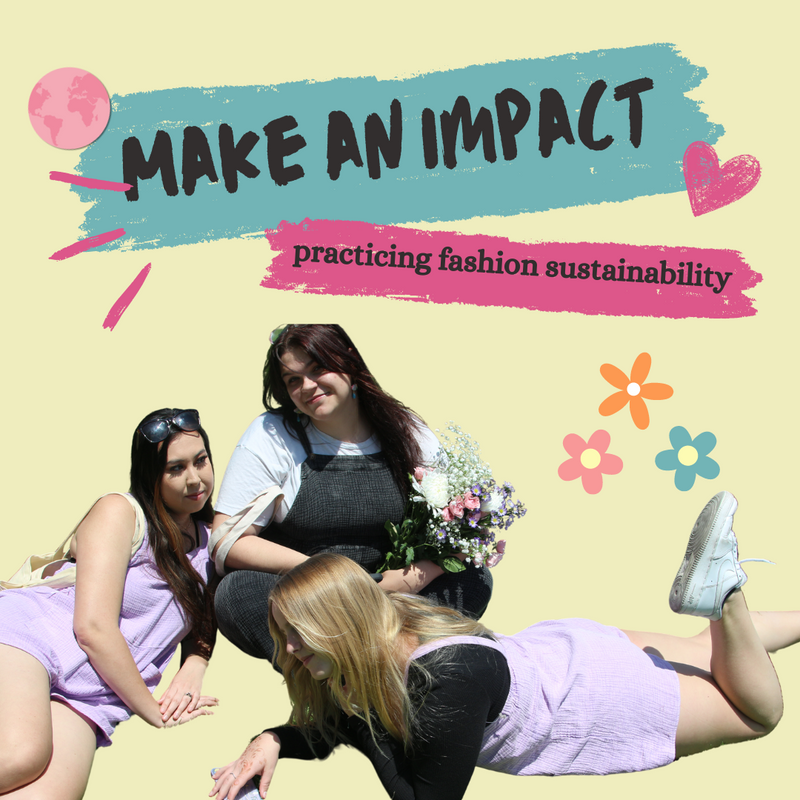
While the fashion industry continues to grow, so does the demand for products. The fashion industry is one of the leading causes for environmental pollution. Because of this, shopping sustainable has been a widely raised cause but what exactly does that entail? Sustainable fashion (or clothing) uses textiles that are manufactured, constructed, and marketed in a responsible and conscious way that acknowledges and accounts for their environmental and socioeconomic impacts. Many companies claim to have sustainable products so let's debunk some common myths about sustainable shopping.
Myth 1: Raising garment worker wages would increase prices for customers
Most brands are in agreement that employees have a right to humane working conditions and that workers in their supply chains should be paid a living wage, but they disagree when it comes to taking accountability. Brands remind us that paying decent wages is the responsibility of the supplier factories. The companies claim that factories are required to follow a "Supplier Code of Conduct," which essentially transfers all liability associated with conducting due diligence on labor and human rights to the factory. In fact, when a garment is mass produced, labor accounts for a very little portion of the total cost. Raising worker pay wouldn't substantially, if at all, raise the price of a garment because labor only accounts for around 3% of the overall retail cost of an item. According to the Clean Clothes Campaign, companies may ensure that workers get decent wages by paying as little as 10 cents extra each T-shirt.
Myth 2: Luxury brands are automatically more sustainable and ethical than fast fashion
The issue about luxury apparel is that you are really paying more for the brand than for the actual clothing. The message, the persona behind it, and the logo. Not always for the labor and supplies. Some high-end fashion labels work alongside fast-fashion retailers in sweatshops. Although their higher price tags don't always translate into sustainability, premium companies can be sustainable. We've seen that some of them still use manufacturing equal to sweatshops, while others rely on highly polluting synthetic materials. 96% of well-known companies, including luxury brands, do not reveal the number of workers who receive a livable wage, according to the Fashion Transparency Index. Many luxury businesses trash products annually in an effort to maintain their exclusive reputation. Burberry was one of the biggest brands exposed for engaging in this behavior. To save their brand, they set fire to $38 million worth of unsold apparel and cosmetics in 2018. This shows that paying more doesn’t always mean sustainable.
Myth 3: Sustainable clothes must be expensive
When looking for sustainable clothing there are many inexpensive brands and routes to take. One of the most common and trendy ways is to thrift. This is a great way to find secondhand clothing that limits the amount of production needed. Recycling clothing can be challenging, in part due to the manufacturing process. To begin with, a lot of fabrics are blends (like cotton and polyester), which need to be separated to be used for a new garment. Less than 14% of discarded shoes and clothes in the US get recycled. This is what makes thrifting so good for the environment. Purchasing new clothing is not the only aspect of sustainable fashion. Buying fewer items is the key to a more slow-fashion and environmentally friendly approach. Therefore, you can still wind-up spending less on fashion overall if you purchase from an eco-friendly, fair company even if a piece costs more than you usually spend on it. This is because excessive consumption of lower-quality clothing can lead to waste. The cost of a garment each wear must also be considered. Consider this: if you spend $100 on pants and wear them 100 times, each wear will only cost you $1. The cost per wear of a $20 pair of fast-fashion jeans is $5 if you only wear them four times before they break.
Myth 4: Recycled cotton is just as good as organic cotton
While recycled cotton may sound more sustainable because we are reusing materials it’s in fact the opposite. Recycled cotton typically goes through many processes to shred the material making it reusable. This process is much more labor intensive and ultimately makes the product less durable than the original. Throughout this process the cotton is shredded into yarn which then becomes raw fiber. This harsh process creates a lot of strain of the cotton fibers which makes them more likely to break. Because of this, products made with recycled cotton have a higher chance of feeling dry and lack fiber strength. To make up strength manufactures tend to blend in other fibers meaning that material can no longer be recycled again. One common mixed in material is polyester. These synthetic fibers are less environmentally friendly making recycled cotton not as sustainable as we think. One of the most shocking facts is that recycled cotton products typically cost higher than organic cotton. This means consumers are paying more for recycled products that are lower quality than the original. Overall, there are negative and positives to recycled cotton, but it’s important not to assume just because something claims to be sustainable then it automatically is.
What to look for to shop sustainable
Sustainable materials to search for are those made of natural fibers like organic cotton, linen, hemp, silk, wool, alpaca, and bamboo. A genuinely ethical brand will make it obvious on all its platforms that it is attempting to employ the most environmentally friendly versions of its materials. When asked how they source their materials to guarantee that they were created ethically, many businesses that identify as ethical will be more than willing to respond by email or direct message. The less you spend, the more sustainable you'll be with sustainable fabrics. Investing in a piece that you will wear for many years is far preferable to purchasing multiple sustainably produced, ethically sourced clothes that you will either neglect or donate after a year. Remember that there isn't a single ideal fabric that is sustainable and has no negative effects on the environment. The purpose of checking fabrics is to make you a more knowledgeable consumer so that you may choose clothing in a more mindful and ethical manner. Good On You and additional websites are great places to find out more about a brand's policies.
For more about our policies visit our sustainability page here.



0 comments